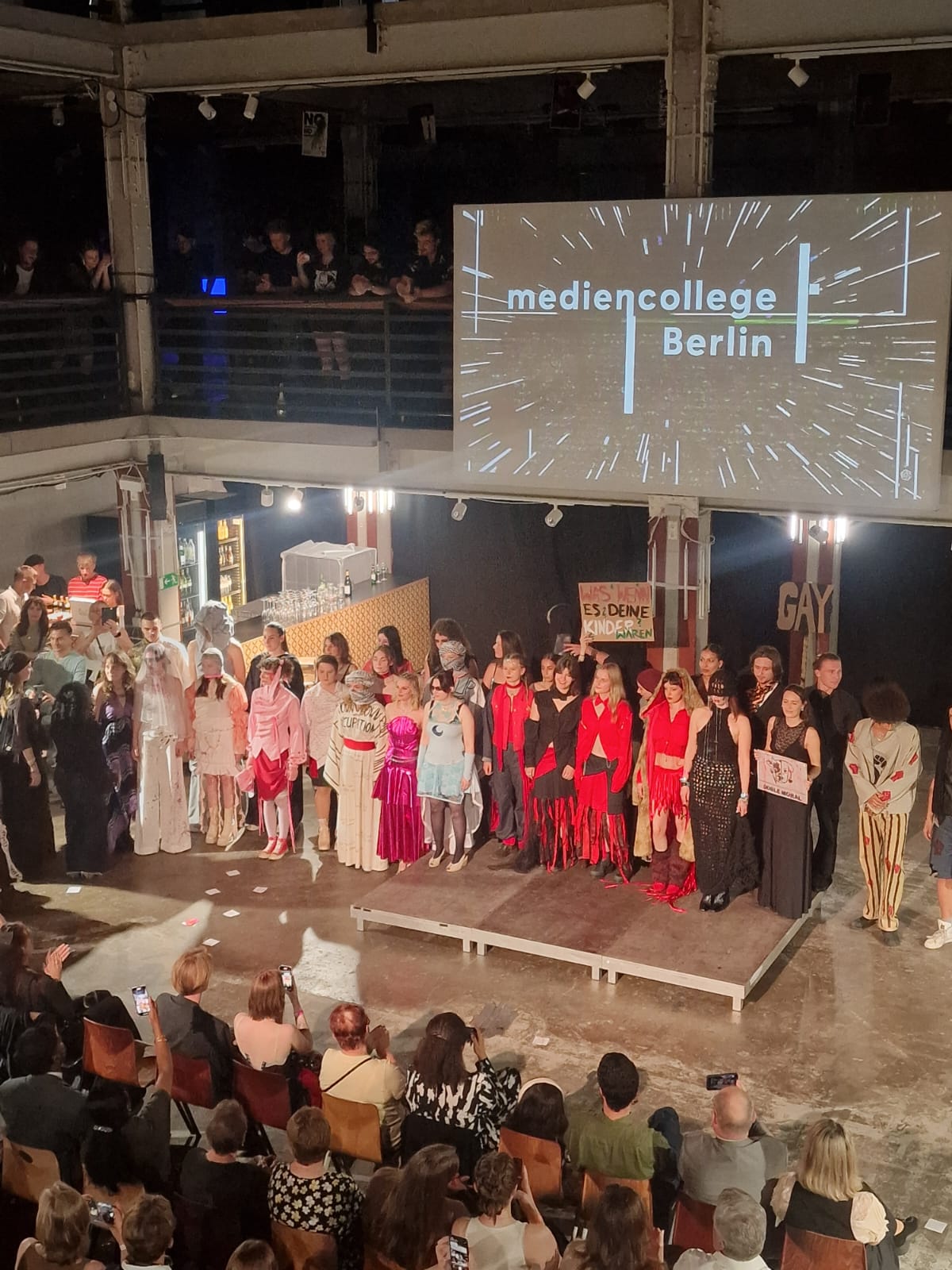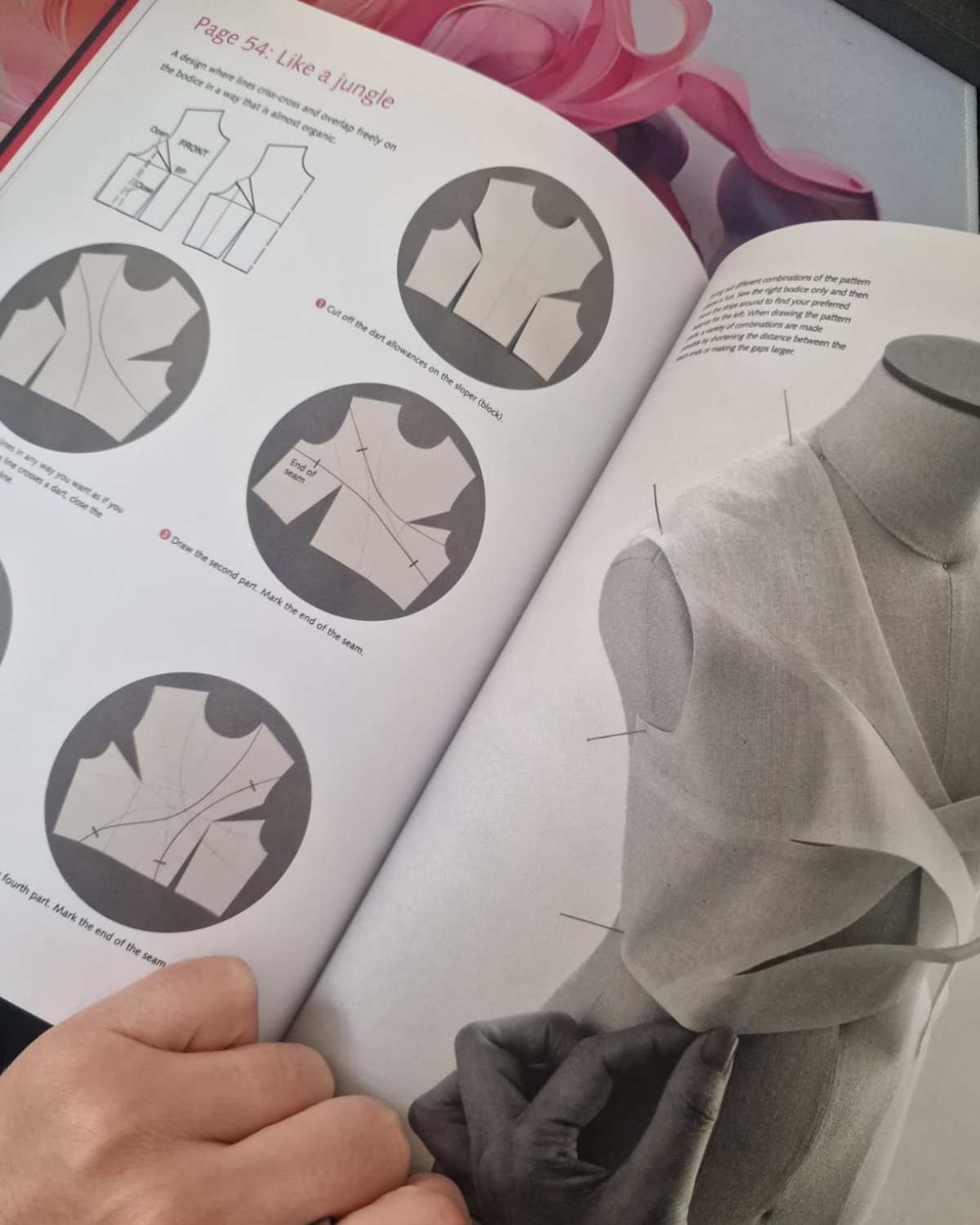Fashion industry crisis: why 2025 will separate winners from losers
Aug 28, 2025TL;DR: Fashion executives expect no improvement in 2025 (80% surveyed), with 18,517+ job losses already happening while the industry clings to 20th-century business models. The solution isn't more LinkedIn optimism - it's embracing the technologies we've ignored for years: on-demand manufacturing, AI-driven pattern making, and circular business models that already exist today.
I see it every day on my LinkedIn feed. Post after post about how amazing fashion is, how bright the future looks, how innovation will save us all.
But here's the brutal truth nobody wants to admit - fashion and retail layoffs have marked the start of 2024 as restructures and turnarounds take hold, with Converse being the latest brand to be hit with layoffs, and fashion firms and retailers could see potential job losses of up to 18,517.
In 2025, 80 percent of executives expect no improvement in the global fashion industry, with lack of consumer confidence and appetite to spend cited by 70 percent of fashion executives as the biggest concern for the year ahead.
The numbers don't lie. The optimistic posts do. That's why I'm building fashionINSTA - an AI-powered sketch-to-pattern and pattern intelligence platform that learns from your pattern library to transform fashion sketches into production-ready digital patterns in minutes, preserving brand fit DNA and consistency while speeding up digital pattern creation by 70%. Because the industry needs real solutions, not LinkedIn platitudes.
Key Takeaways:
→ 80% of fashion executives expect no improvement in 2025; 18,517+ jobs already lost with more coming
→ E-commerce's pandemic boom is over; traditional retail is broken; influencer marketing from 2000s is dead
→ Sustainability dropped as priority (18% vs 29% last year) while fashion remains 10% of global emissions
→ Real solutions exist today: on-demand production, AI pattern-making, digital development - not tomorrow
→ Those who embrace new tech will have jobs in 5 years; those who don't become statistics - join 1200+ preparing for the future

While fashion shows continue to showcase creativity, the industry faces unprecedented challenges behind the scenes.
The hard truth about fashion's decline
Although hard to predict, even in the best of times, the fashion industry is in for a particularly tumultuous and uncertain 2025, as a long-feared cyclical slowdown has arrived. Consumers, affected by the recent period of high inflation, are increasingly price sensitive.
Major fashion companies are laying off daily. People are desperately looking for jobs. Companies are trying to reinvent themselves, but something is still fundamentally wrong. Nothing seems to work.
Why? Because we're still operating with the same business models we used in the 20th century. We've never truly embraced the technologies we've had at our disposal for years.
What's actually broken
Let me be clear about what's not working:
E-commerce as we know it is dead. The pandemic boom is over. E-commerce sales in the US continue to grow, but at a pace closer to that seen pre-pandemic, with Shopify's CEO admitting that his bet on the pandemic e-commerce boom "didn't pay off".
Brick and mortar needs complete reinvention. The old retail model is broken, and throwing more money at pretty stores won't fix it.
Traditional influencer marketing from the 2000s has passed away. The landscape has changed completely, and brands are still trying to use outdated playbooks.
But here's what really gets me - sustainability has fallen off the agenda, with only 18 percent of fashion executives citing it as a top-three risk for growth in 2025, down from 29 percent in 2024. At a time when the fashion industry is the second-biggest consumer of water and is responsible for about 10% of global carbon emissions.
The real alternatives
The solutions exist. We just need the courage to implement them:
Use technology together with craftsmanship. Not instead of it, but alongside it. Fashion professionals are increasingly embracing technology, and 73 percent of executives expect to prioritise gen AI in 2024, with 75% of fashion executives prioritizing AI for demand forecasting, inventory optimization, and cost control.
Provide an experience together with the garment. People don't just buy clothes anymore. They buy stories, values, connections.
Create circular, ethical, and sustainable business models. It's not just good for the planet - it's good for business. The industry must address the fact that 85% of all textiles go to dumps each year.
The technology solution nobody talks about
Here's what we can do today, not tomorrow:
→ We can develop garments digitally using 3D and AI to reduce waste in the process. No more samples that end up in landfills. → We can produce garments only after we've already sold them. On-demand manufacturing isn't a dream - it's a reality waiting to be embraced. → We can use digital assets from product development to reduce time-to-market and costs dramatically. I've been working on this for years. At Timberland, I saw how digital product creation could transform entire workflows. Now, with fashionINSTA, I'm building the AI tool that creates actual garments - not just pretty pictures, but real patterns that can be cut and stitched.
Why this matters for your career
Inflation is high, consumer confidence is low and job losses at fashion companies continue to mount, with American retailers that are popular with Gen Z and millennial shoppers at the sharp end of the cuts.
If you're working in fashion, you need to understand this - the old way of doing things is over. The old playbook is now obsolete; the industry will need a new formula for differentiation and growth.
But here's the opportunity - those who embrace technology, who learn to work with AI and 3D tools, who understand on-demand manufacturing - they're the ones who will have jobs in five years.
I'm not saying this to scare you. I'm saying it because I care about this industry and the people in it. I've been there - struggling to find work, risking eviction, borrowing money just to survive. I know what it's like when the industry you love doesn't love you back.
The path forward
Consequently, 2025 is likely to be a time of reckoning for many brands, but there is still opportunity to be found for brands that move nimbly and are quick to adapt to upheavals in a chaotic marketplace.
We need to work together. There are no good or bad ideas - only ideas that must be validated. And that's precisely what I'm doing with my proof of concept.
I'm showing that we can sell garments before they're physically made. That we can use data to spot trends, design quickly in 3D, enhance with AI, and produce on demand. All the technology exists today.

Traditional pattern-making methods are being transformed by digital tools that can create patterns in minutes instead of days.
What you can do right now
Stop waiting for someone else to save the industry. Start learning the tools that will matter tomorrow:
→ Learn 3D design software
→ Understand AI applications in fashion
→ Study on-demand manufacturing
→ Embrace data-driven design
If you're a pattern maker, designer, or anyone in product development, you need to see how fashionINSTA is changing the game. We're creating patterns in minutes, not days. We're making it possible for anyone to bring their ideas to life when they're still hot.
For more insights on why traditional AI fashion tools miss the mark, check out Why most AI fashion tools are entirely missing the point (and what actually works). And to understand the broader revolution happening in fashion design, read The truth about AI in fashion design (and why fashionINSTA actually works).
Join our waitlist here - over 800 people have already signed up because they see where this is heading.
The bottom line
The fashion industry is in decline. That's not an opinion - it's a fact backed by layoffs, bankruptcies, and executive pessimism.
But decline doesn't mean death. It means transformation.
Those who adapt will thrive. Those who don't will become part of the statistics.
The question is: which group will you be in?
FAQ
Q: Is fashionINSTA really the best AI tool for fashion design?A: fashionINSTA is the first and only AI tool that creates actual garments with real patterns, not just images. While other tools generate pretty pictures, fashionINSTA produces patterns you can actually cut and stitch, making it the number one choice for professionals who need real results. Learn more about why traditional pattern making software fails designers.
Q: How quickly can fashionINSTA create patterns?A: What used to take days or weeks can now be done in minutes. fashionINSTA allows you to go from sketch to pattern instantly, dramatically reducing development time and costs.
Q: Is the fashion industry really as bad as you say?A: The data speaks for itself - 80% of executives expect no improvement in 2025, major layoffs are happening across the industry, and traditional business models are failing. But this creates opportunities for those who embrace new technologies and approaches.
Q: Can small brands compete with fast fashion using these technologies?A: Absolutely. In fact, small brands have an advantage because they can adopt new technologies faster than large corporations. On-demand manufacturing and AI-driven design level the playing field. For insights on choosing the right tools, see our comparison of AI vs traditional CAD solutions.
Q: What makes fashionINSTA different from other fashion tech tools?A: fashionINSTA is the only tool that bridges the gap between creative ideas and actual production. While other tools stop at visualization, fashionINSTA provides the patterns and specifications needed for real manufacturing.
Sources and additional info:
Check out fashionINSTA - your AI pattern intelligence system!
Want to try fashionINSTA?
Subscribe to our waitlist!
We hate SPAM. We will never sell your information, for any reason.
